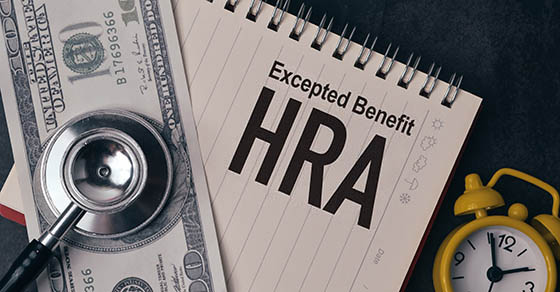As the end of the year approaches, it is a good time to think of planning moves that will help lower your tax bill for this year and possibly the next. Year-end planning for 2019 takes place against the backdrop of recent major changes in the rules for individuals and businesses. For businesses, the corporate tax rate has been reduced to 21%, there is no corporate AMT, there are limits on business interest deductions, and there are very generous expensing and depreciation rules. And non-corporate taxpayers with qualified business income from pass-through entities may be entitled to a special deduction.
Despite these major changes, the time-tested approach of deferring income and accelerating deductions to minimize taxes still works for many taxpayers, along with the tactic of “bunching” expenses into this year or the next to get around deduction restrictions.
We have compiled a list of actions based on current tax rules that may help you save tax dollars if you act before year-end. Not all actions will apply in your particular situation, but you (or a family member) will likely benefit from many of them. Please review the following list and contact us at your earliest convenience so that we can advise you on which tax-saving moves to make:
Year-End Tax Planning Moves for Business Owners and Businesses
• Taxpayers other than corporations may be entitled to a deduction of up to 20% of their qualified business income. For 2019, if taxable income exceeds $321,400 for a married couple filing jointly, $160,700 for singles and heads of household, and $160,725 for marrieds filing separately, the deduction may be limited based on whether the taxpayer is engaged in a service-type trade or business (such as law, accounting, health, or consulting), the amount of W-2 wages paid by the trade or business, and/or the unadjusted basis of qualified property (such as machinery and equipment) held by the trade or business. The limitations are phased in-for example, the phase-in applies to joint filers with taxable income between $321,400 and $421,400 and to single taxpayers with taxable income between $160,700 and $210,700.
Taxpayers may be able to achieve significant savings with respect to this deduction, by deferring income or accelerating deductions so as to come under the dollar thresholds (or be subject to a smaller phaseout of the deduction) for 2019. Depending on their business model, taxpayers also may be able increase the new deduction by increasing W-2 wages before year-end. The rules are quite complex, so don’t make a move in this area without consulting your tax adviser.
• More “small businesses” are able to use the cash (as opposed to accrual) method of accounting in than were allowed to do so in earlier years. To qualify as a “small business” a taxpayer must, among other things, satisfy a gross receipts test. For 2019, the gross-receipts test is satisfied if, during a three-year testing period, average annual gross receipts don’t exceed $26 million (the dollar amount was$25 million for 2018, and for earlier years it was $5 million). Cash method taxpayers may find it a lot easier to shift income, for example by holding off billings till next year or by accelerating expenses, for example, paying bills early or by making certain prepayments.
• Businesses should consider making expenditures that qualify for the liberalized business property expensing option. For tax years beginning in 2019, the expensing limit is $1,020,000, and the investment ceiling limit is $2,550,000. Expensing is generally available for most depreciable property (other than buildings) and off-the-shelf computer software. It is also available for qualified improvement property (generally, any interior improvement to a building’s interior, but not for enlargement of a building, elevators or escalators, or the internal structural framework), for roofs, and for HVAC, fire protection, alarm, and security systems. The generous dollar ceilings that apply this year mean that many small and medium sized businesses that make timely purchases will be able to currently deduct most if not all their outlays for machinery and equipment. What’s more, the expensing deduction is not prorated for the time that the asset is in service during the year. The fact that the expensing deduction may be claimed in full (if you are otherwise eligible to take it) regardless of how long the property is held during the year can be a potent tool for year-end tax planning. Thus, property acquired and placed in service in the last days of 2019, rather than at the beginning of 2020, can result in a full expensing deduction for 2019.
• Businesses also can claim a 100% bonus first year depreciation deduction for machinery and equipment-bought used (with some exceptions) or new-if purchased and placed in service this year. The 100% writeoff is permitted without any proration based on the length of time that an asset is in service during the tax year. As a result, the 100% bonus first-year writeoff is available even if qualifying assets are in service for only a few days in 2019.
• Businesses may be able to take advantage of the de minimis safe harbor election (also known as the book-tax conformity election) to expense the costs of lower-cost assets and materials and supplies, assuming the costs don’t have to be capitalized under the Code Sec. 263A uniform capitalization (UNICAP) rules. To qualify for the election, the cost of a unit of property can’t exceed $5,000 if the taxpayer has an applicable financial statement (AFS; e.g., a certified audited financial statement along with an independent CPA’s report). If there’s no AFS, the cost of a unit of property can’t exceed $2,500. Where the UNICAP rules aren’t an issue, consider purchasing such qualifying items before the end of 2019.
• A corporation (other than a “large” corporation) that anticipates a small net operating loss (NOL) for 2019 (and substantial net income in 2020) may find it worthwhile to accelerate just enough of its 2020 income (or to defer just enough of its 2019 deductions) to create a small amount of net income for 2019. This will permit the corporation to base its 2020 estimated tax installments on the relatively small amount of income shown on its 2019 return, rather than having to pay estimated taxes based on 100% of its much larger 2020 taxable income.
• To reduce 2019 taxable income, consider deferring a debt-cancellation event until 2020.
• To reduce 2019 taxable income, consider disposing of a passive activity in 2019 if doing so will allow you to deduct suspended passive activity losses.
These are just some of the year-end steps that can be taken to save taxes. Again, by contacting us, we can tailor a particular plan that will work best for you.





